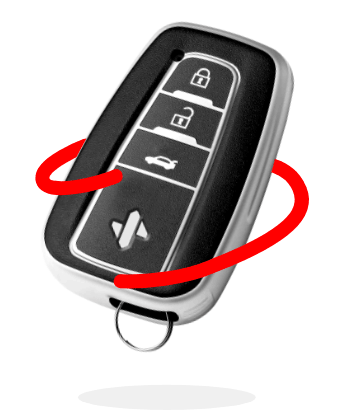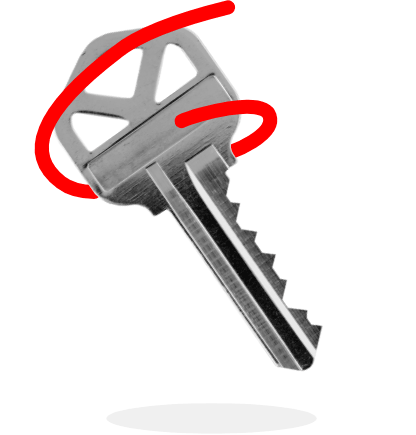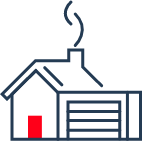Find out more about our partnership opportunities today
Frequently asked questions
We’re here to make insurance easy. Check out our FAQs for everything from quotes to claims. Still need help? Get in touch
About Simply IOA
We know that finding the best insurance deal can be a bit of a nightmare. That's why we've taken the time to create a smart comparison service that simplifies the process.
We compare high quality auto and home insurance quotes, select the right level of cover and recommend the best binding quotes, all in just 3 minutes. What's more, we even let you pay online or over the phone.
We know that finding the best insurance deal can be a bit of a nightmare. That's why we've taken the time to create a smart comparison service that simplifies the process.
We compare high quality auto and home insurance quotes, select the right level of cover and recommend the best binding quotes, all in just 3 minutes. What's more, we even let you pay online or over the phone.
We only work with high quality insurance companies that we know and trust. To find out the providers we offer in your area please choose your state from the list of States we serve.
Auto Insurance
With so many levels of coverage it is easy to get confused. To help you get the most out of the insurance process, we have listed the different levels of cover below:
- Liability: Liability pays if you are at fault in an accident. Bodily injury and property damage coverage will pay for repairs to the other vehicle, medical costs for injuries in the other vehicle, plus other expenses related to the accident such as legal fees.
- Collision: This coverage protects your vehicle if you collide with another or hit a stationary object such as a pothole or guardrail. You pay your deductible up front and your auto policy pays the balance up to the actual cash value of your vehicle
- Comprehensive: Comprehensive coverage pays for everything other than a collision: fire, theft, vandalism, hitting a deer or getting a rock through your windshield. All those little unexpected life events that are outside of your control.
- Medical Expenses: This coverage is also known as no-fault coverage. Medical expenses will pay either way - if you are at-fault or if you are not at-fault. It will pay for injuries sustained by you, resident family members and people injured while riding in your vehicle.
- Uninsured/Underinsured Motorist: This coverage pays if you are not at-fault and the other driver does not have coverage or does not have enough coverage to cover your injuries. This coverage is for bodily injury only. It does not cover property damage.
- Roadside Assistance: This optional coverage provides assistance when you need it most. It's an additional layer of protection if you need a tow, your vehicle battery dies unexpectedly, or your tire goes bump in the night.
- Rental Reimbursement: This optional coverage provides a replacement vehicle if you are involved in a covered loss and your vehicle needs repair. This coverage does not apply if your vehicle needs routine maintenance work or if you rent a vehicle on vacation.
Auto coverage rates depend on a number of factors. These include:
- Personal demographics
- Where you live
- Average annual distance driven
- Type of vehicle
- Your discounts and coverage selected
- Your Driving History
Driving without coverage is never a good idea as it leaves you financially vulnerable. In the event of an accident, you will be personally responsible for any injuries or damages you cause as a result of an at-fault auto accident.
In Florida, even if you are not at-fault you will be responsible for the first $10,000 in medical bills as a result of being out of compliance with the no-fault law. Never drive without auto coverage.
Yes. Every vehicle is assigned a code based on its features, as well as the cost to replace. Safety features such as brake assist, air bags and anti-lock brakes help while high performance vehicles may increase premiums
The available discounts depend on your insurer, below are some of the most common discounts:
- If you are a good driver
- If you are accident free
- Low mileage driven annually
- If you own your own home.
- Vehicle safety features
Each state determines mandatory and optional coverage, you make the final selection of coverage that's right for you. Most policies consist of:
- Bodily Injury (BI) and Property Damage (PD) liability coverage for injuries and damage to other people or property (third party coverage to others, pays only if you are at-fault)
- Personal Injury Protection (PIP) to cover medical expenses and other damages. (first party coverage for you and resident family members)
- Collision coverage for damage done to your vehicle in collisions (optional covers damage to your auto)
- Comprehensive Coverage for damage caused by non-collisions incidents such as, fire, vandalism, or theft (optional covers non-collision damage to your auto)
- Uninsured and Underinsured Motorists (UM/UIM) coverage protects in the event of an accident where the at-fault driver either does not have coverage or does not carry enough coverage to pay for your injuries (may be rejected or written at lower limits than your bodily injury coverage)
As in any financial decision, you must weigh your budget against your potential exposures and valuable coverages. For example: Uninsured/Underinsured Motorists coverage is often overlooked but can be crucial in accidents with uninsured drivers.
If the person is a regular operator of your vehicle or a member of your household, they must be listed on your policy as a named driver. Certain exceptions may apply, but you must talk with your insurance agent to confirm.
Home Insurance
Home insurance provides protection against the cost of repairing damage to your home from circumstances that are outside of your control, for example: fire, wind, and lightning.
- Property damage: If your house or storage shed is damaged due to a covered hazard, your home insurance policy will pay to repair damage to your residence and/or detached structures, up to the limits of your policy. Your policy protects your home against hurricanes and vandalism, but floods are excluded unless you buy the coverage back by endorsement or you purchase a separate policy. Be sure to check your homeowner’s policy for exclusions.
- Personal property loss: Pays up to your policy limits for covered contents and includes both damage to your property and theft. Floods and intentional negligence are always excluded. If the contents of your home include collectibles or antiques, you will need additional “riders” or special endorsements on your policy. Be sure to call SimplyIOA on 833.872.4467 to speak to our expert agents about your personal belongings and valuables.
- Personal liability: If you, a resident relative or even a pet causes an accident resulting in injury or property damage. Your policy will cover medical bills if someone is injured on your property. It will also pay property damage if your child hits a grand slam straight through your neighbor’s window. Be sure to talk to one of our agents about how to choose adequate policy limits to protect your assets in the event of a lawsuit.
- Additional living expenses: If your home is damaged by a covered peril, loss of use will pay your expenses over your normal living costs while your home is repaired or rebuilt. You pay your normal expenses and your insurance policy pays the additional expenses you incur as a result of temporarily living in a hotel, motel, or apartment.
You need enough home insurance to cover the cost of rebuilding your home and replacing everything inside it. You do not need to include the cost of the land in your replacement estimate.
- Structure of home: Home insurance is written based on the cost to rebuild your home as it stands today. Market value is the amount a willing buyer will pay a willing seller and is not a good indicator of what it would actually cost to build your home.
- Personal belongings: Turn your house upside down and shake it, everything that falls out will be covered by the contents coverage in your home insurance policy. The standard amount for contents coverage is 50% of the cost to rebuild your home. Conduct an inventory of your personal belongings to determine how much coverage you need and make sure you have adequate coverage and your policy includes replacement cost coverage. If you own valuable collectibles or antiques, you may want to consider purchasing additional coverage through a personal article floater or an additional rider.
- Liability: A basic homeowners policy includes $100,000 in liability. However, you can buy higher limits of liability coverage by endorsement. Considering the cost of personal injury lawsuits, you may want to purchase liability insurance with $300,000 to $500,000 limits.
- Umbrella policy: This can provide additional protection and peace of mind; consider buying an umbrella liability policy, which can add another $1 million or more in liability coverage. An umbrella policy is an excellent way to increase liability protection.
Anytime! If you own or rent a home, you do not need to wait until your policy renews as it is easy to switch. Type in your address on our Homeowner page to get started.
If your home insurance is included in your mortgage payment, we can work with your mortgage company to help you easily make the transition to a new policy.
Now is the best time to switch your home insurance. Keep your payments up to date and start shopping. When you cancel your current policy, any unearned premium will be returned to you but if you owe money, you will receive a bill.
The best part about shopping mid-term, is that you get to pick the date your new policy begins. Give us a call on 833.872.4467 to receive quotes from the top insurance carriers.
Several factors can affect the premium you pay for home insurance including:
- The features and characteristics of your home: The age of your home, the type of construction (brick, frame, concrete block), the type of and the age of wiring, type of roof, an attached garage versus a detached garage.
- Location: Where your home is located in the state can affect your home insurance premium. A home located near a fully staffed fire station is less expensive to insure; but a home exposed to extreme weather, such as hurricanes or tornadoes; or located in a neighborhood more prone to theft will be more expensive to insure.
- Protective Devices: Burglar alarm systems, smoke detectors, fire extinguishers, sprinkler systems and deadbolt locks lower your home insurance premium.
- Claims History: If you or your home have a history of claims, you may pay a higher premium.
Claims
Making a claim will usually raise the cost of your insurance premiums the following year. This will of course depend on your insurance provider and the sort of claim you’re making.





